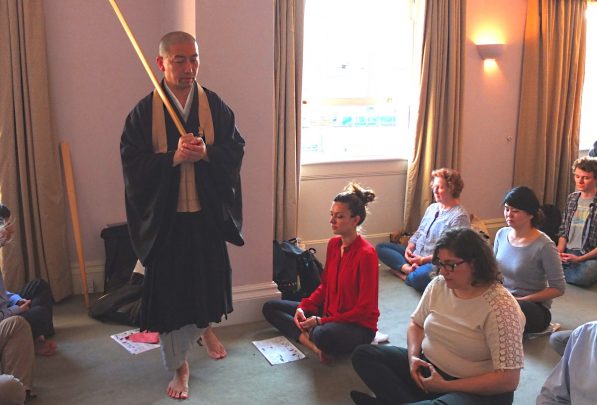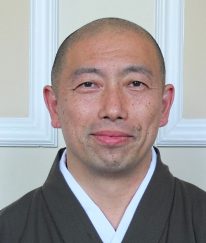 Special event
Special eventWednesday 8 June 2016
6:30pm – 8:00pm
Zazen Meditation: Workshop and Practice
13/14 Cornwall Terrace, Outer Circle (entrance facing Regent's Park), London NW1 4QP
大和日英基金 主催
Zensho-an Temple in Tokyo was founded in 1883 by Tesshu Yamaoka, retainer of the last shogun, Tokugawa Yoshinobu. The Zen temple was established as a place of repose for the spirits of those who died during the Meiji Restoration and the demise of the Tokugawa Shogunate. Since then, Zensho-an has become renowned for Zazen meditation and Zen mindfulness.
Zen teaches that gods, Buddhas and enlightenment all exist in our own minds; indeed, as Chinese priest Zhongfeng Mingben (1263-1323) once stated, “Zen is the name of the mind.” Thus, central to Japanese Zen Buddhism is the practice of meditation. However, Zazen is not ‘ordinary’ meditation. Rather than keeping eyes closed to focus on some definite mental image, during Zazen, the eyes and ears are open to whatever is to be seen and to be heard. Existence in the here and now is prized over isolation from reality; the ability of the mind to remain unmoved by material things is paramount.
Zensho-an is said to be the most popular temple for Zazen, with waiting times for meditation sessions exceeding more than two months. It is particularly popular with Japanese ‘salarymen’, politicians and those with high-pressure jobs, as Zazen provides a means for them to deal with the stresses of their daily working lives.
The Foundation was delighted to offer this unique opportunity to experience a Zazen workshop and to learn more of its history and practice.
コントリビューターについて

Shoshu Hirai
Shoshu Hirai is the seventh head priest of Zensho-an Temple in Tokyo. After graduating from Gakushuin University, Hirai entered into training at Ryutakuji Temple. He subsequently inherited Zensho-an in 2003 and became the Head Priest. Hirai edited Saigo no Samurai: Yamaoka Tesshu (2009) detailing the life of Yamaoka and the steps he took to establish Zensho-an as a place to retain Japan’s traditions and to honour those lost during the Meiji Restoration.